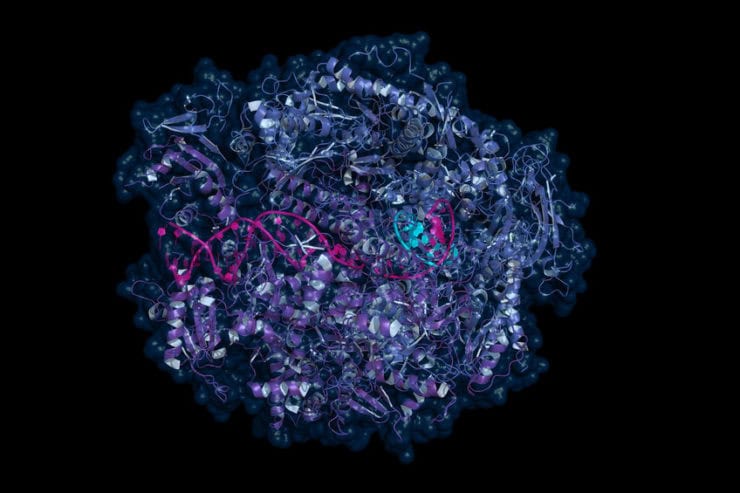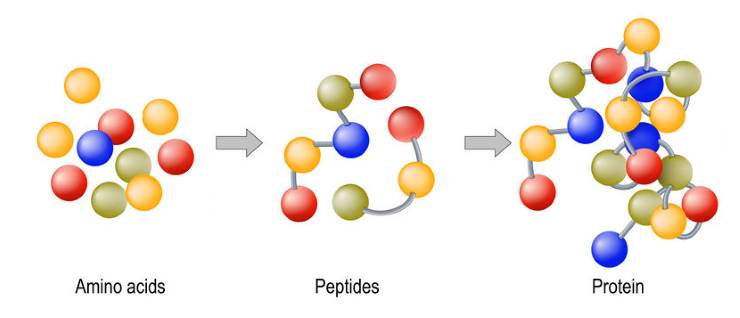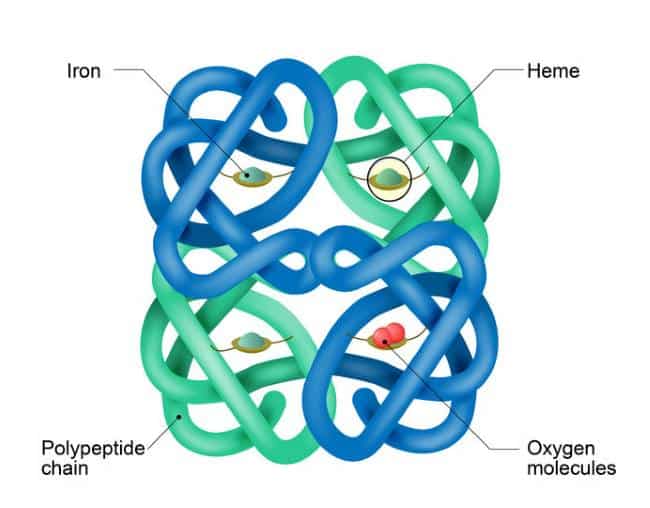I often mention in my articles how the body makes proteins, how proteins transport cholesterol, or how DNA codes for proteins. You also might know from food packaging and sports drink advertisements that proteins are an essential part of your diet and you need them badly.

This is all true, but do you know what proteins actually are? Let’s zoom in on them.
In a biological sense, proteins are one of the main components of living beings. We are made of proteins, and that is why meat, for example, is a good source of them. Proteins also do all kinds of stuff inside living things.
For example, proteins regulate blood sugar in many animals. Insulin and glucagon, two important hormones in this process, are both proteins. Hemoglobin, which transports oxygen through blood, is also a protein, as is elastin, an important component of our skin.
Mitochondria are made of many proteins and, as you might suspect, surface proteins of viruses are also proteins, just as antibodies that fight viruses are. I won’t name all the proteins since let alone the human body consists of more than 80,000 different proteins. Hair is also made of proteins, by the way.
In a molecular sense, proteins are long chains of amino acids. Oh, dang – another new term to know. Don’t worry, though – amino acids are more straightforward. They are the tiny “bricks” that proteins are made of. And they themselves are made of atoms, such as nitrogen, carbon, oxygen, hydrogen, and more.

The interesting part is that there are only 20 amino acids, so they have much less variety than proteins themselves. But imagine all the different things you can build if you have a supply of 20 different kinds of Lego bricks. Amino acids have different chemical properties, such as the ability to dissolve or aggregate in water, and they bear a positive or negative charge.
The reason why proteins work as they do also lies in the chemical properties of amino acids. Each of them acts differently in water, which, as you know, is what our bodies essentially are made of. Two positive molecules repel each other, while positive and negative ones attract.
If you string together many amino acids with unbreakable bonds, they will act strangely. The positive ones next to each other will try to run away, but they won’t get very far. The uncharged ones will not like water and will try to stay close to each other, just like droplets of oil do. A long string will bend and fold. In general, the protein will take a shape that depends on the sequence of these amino acids.
Of course, only a tiny fraction of the possible proteins that you can make with 20 amino acids are useful. After all, we want proteins to do something, like bind oxygen in the lungs and release them in muscle. The way this particular one works is it has four pockets with positively charged amino acids facing its inside. These positive charges attract an iron-containing compound called heme (hence the hemoglobin), and iron, in turn, binds an oxygen molecule (hence, having iron in corn flakes is a pretty big deal).

That is only one example. If you string amino acids together, you’ll end up with series of all kinds of proteins with different shapes and thus potentially different functions. They can be long, round, hollow, or blobby. They have different charges on different locations of their surface that allow them to interact with substances, including other proteins, inside the body.
Another example is in muscle, which consists of different proteins packed together. And not only are they packed together, but they can also slide along one another. Thus, the muscle can change its length. This is useful because it allows us to move, which would not be possible without proteins.
So, where do proteins come from?
Proteins are made by our bodies. The body reads the sequence of our DNA at specific locations and gets instructions for what sequence to chain these amino acids together in. I won’t get into the details of how this process works; I’ll leave that for another time. In essence, our genes are instruction manuals that state what sequence of amino acids a protein should be.
For example, when our bodies need insulin, the genes that “code” for insulin switch on in the pancreatic cells. The body then reads the sequence, and, from each cell, out comes a single molecule of pro-insulin, a 110-amino-acid-long chain that later will become insulin. And as you might expect, the gene gets turned on and off many times throughout the day.
The final question: the body makes proteins out of amino acids, but where do these amino acids come from?
Well, many of them come from food. Animal products are high in protein, which consists of amino acids, and many plants aren’t lacking it either. Of course, we don’t need poultry muscle proteins, but our bodies can break them apart, down to single amino acids, and reuse them as bricks for new protein synthesis.
And if needed, the body can break down amino acids even further and use their components to make other amino acids or other things.
However, regardless of whether amino acids are used as they are or remodeled, they initially come from the proteins in our food. So beware of your eating habits because in a literal sense, you are what you eat.